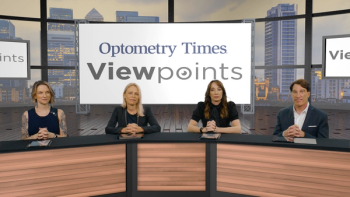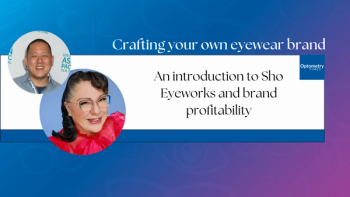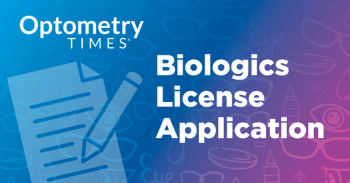
- December digital edition 2022
- Volume 14
- Issue 12
Making sense out of presbyopia clinical study data
Considering safety and efficacy of new drops and the potential impact on your patients.
With the first presbyopia-correcting drops already FDA-approved and a raft of new pharmacological treatments for presbyopia coming to the marketplace soon, it is a good time to start paying attention to clinical trial data for these products.
Every company likes to put the most positive spin possible on study data—it’s called marketing for a reason. But the good news is that all of the new presbyopia drops will be held to a similar standard by the FDA, making it easier for busy doctors to compare safety and efficacy and figure out what will work for our patients.
The primary efficacy end point in clinical trials for the first presbyopia-correcting drop (Vuity; Allergan)—and likely for all future such drops—goes something like this:
That’s a mouthful! Let’s break that efficacy end point down into each of its components:
Statistical significance
In every clinical trial, researchers have to demonstrate that the difference between the study group and the placebo group isn’t just due to chance. But keep in mind it is possible to have a statistically significant difference that isn’t clinically meaningful (or not meaningful enough).
For example, in 1 company’s phase 2 study of presbyopia-correcting drops, statistical significance was achieved all the way out to 7 hours. Dig a little deeper and the data show that at 4, 5, and 7 hours, only 22% (or less) of the study group had the desired near vision improvement.1 In a perfect world, we would like to see longer efficacy.
A 3-line gain
Presbyopia drop companies and the FDA have determined that an improvement of 3 lines is a clinically significant gain. That’s an important benchmark.
A patient who gained only 1 line might feel it wasn’t worth the cost or effort, or that gain could even be a measurement error. But we can feel confident that most patients would appreciate an improvement of 3 lines. Many companies are also reporting 2-line gains—and that may be meaningful to our patients as well.
Distance-corrected mesopic near
Exactly how near vision is measured always needs to be qualified for it to make much sense. Presbyopia-correcting drops are essentially being tested in emmetropic or “distance-corrected” conditions. A patient who is wearing progressive spectacles or is otherwise not fully corrected at distance may not get the same effect. Lighting is also a key element because to really test these drops, we need to know how well they work in dim (mesopic) light.
At least 1 presbyopia drop company has been reporting its early results under photopic conditions, which is not very useful because bright light improves near vision. In clinical trials, distance from the reading card, lighting conditions, and refractive correction are all standardized. In the real world, there will be much more variability in these factors and patients may judge the drops better or worse accordingly.
Maintaining distance acuity
What good would a drop be if it improved near vision but compromised distance vision? The goal with these presbyopia drops is to provide the near gains with no (or minimal) impact on distance vision—specifically, no more than a 1-line loss. You’ll hear some buzz about myopic shift, but keep in mind that the stability of distance vision is “baked in” to the end point criteria in these studies.
Hours and days
The bottom line for many of us is how long will these drops last? This is 1 area where we are likely to see differences in the end points chosen for different products. End points have varied between hour 3, day 302, and up to as long as 9 to 10 hours after instillation. This will be a key point of differentiation once we have multiple products available.
Testing results after a month of daily use is also important to give us more confidence and insight into tolerability and safety. Early adopters have found that patients seem to see better and have fewer side effects after a few days or weeks of use, so it may be important to tell patients not to give up if their day 1 results aren’t as hoped.
Adverse effects
All clinical trials have to report adverse events. We need to pay attention to any serious adverse effects, even when rare. When it comes to adverse events that are mild and transient—such as red eyes or headache—I get concerned only if the percentages are very high. These types of adverse effects are commonly reported by 5% or 10% of the population.
The “elephant in the room” with miotic drops is retinal detachment (RD). There have been reports of RD3,4 and vitreous detachments, but these were not reported during clinical trials. A prudent approach for patient safety is to conduct dilated retinal exams to ensure those with preexisting retinal pathologies or other RD risk factors such as high myopia can be identified.
Conclusion
We were fortunate enough to participate in many of these trials. The patients who participated were extremely impressed with the concept of topical correction of presbyopia. This is an exciting time—a new “golden age”—with new study data for presbyopia drops coming out every quarter.
It is worth following these clinical trials with an open mind to see what might be on the horizon for our patients and which types of patients might benefit most. But at the end of the day, personal experience and patient satisfaction will likely play the biggest role in which ones we recommend.
References
Aceclidine Phase 2b clinical trial results. Olenz Therapeutics. Accessed September 30, 2022.
https://lenz-tx.com/pipeline/aceclidine/ Waring GO 4th, Price FW Jr, Wirta D, et al. Safety and efficacy of AGN-190584 in individuals with presbyopia: the GEMINI 1 phase 3 randomized clinical trial. JAMA Ophthalmol. 2022;140(4):363-371. doi:10.1001/jamaophthalmol.2022.0059
Al-Khersan H, Flynn HW Jr, Townsend JH. Retinal detachments associated with topical pilocarpine use for presbyopia. Am J Ophthalmol. 2022;242:52-55. doi:10.1016/j.ajo.2022.05.011
Eton EA, Zhao PY, Johnson MW, Rao RC, Huvard MJ. Rhegmatogenous retinal detachment following initiation of pilocarpine hydrochloride ophthalmic solution 1.25% for treatment of presbyopia. Retin Cases Brief Rep. Published August 12, 2022. doi:10.1097/ICB.0000000000001309
Articles in this issue
almost 3 years ago
Helping patients with poor adherencealmost 3 years ago
Identifying contoured prism lens patientsalmost 3 years ago
Geographic atrophy: What to know and whyabout 3 years ago
Case report: Not all multiple sclerosis is equalabout 3 years ago
Presbyopia: The ever-changing environment and elusive Holy Grailabout 3 years ago
Getting started: methods of initial scleral lens selectionNewsletter
Want more insights like this? Subscribe to Optometry Times and get clinical pearls and practice tips delivered straight to your inbox.













































